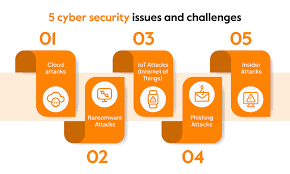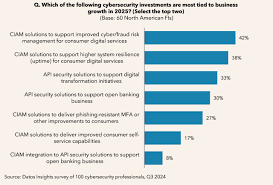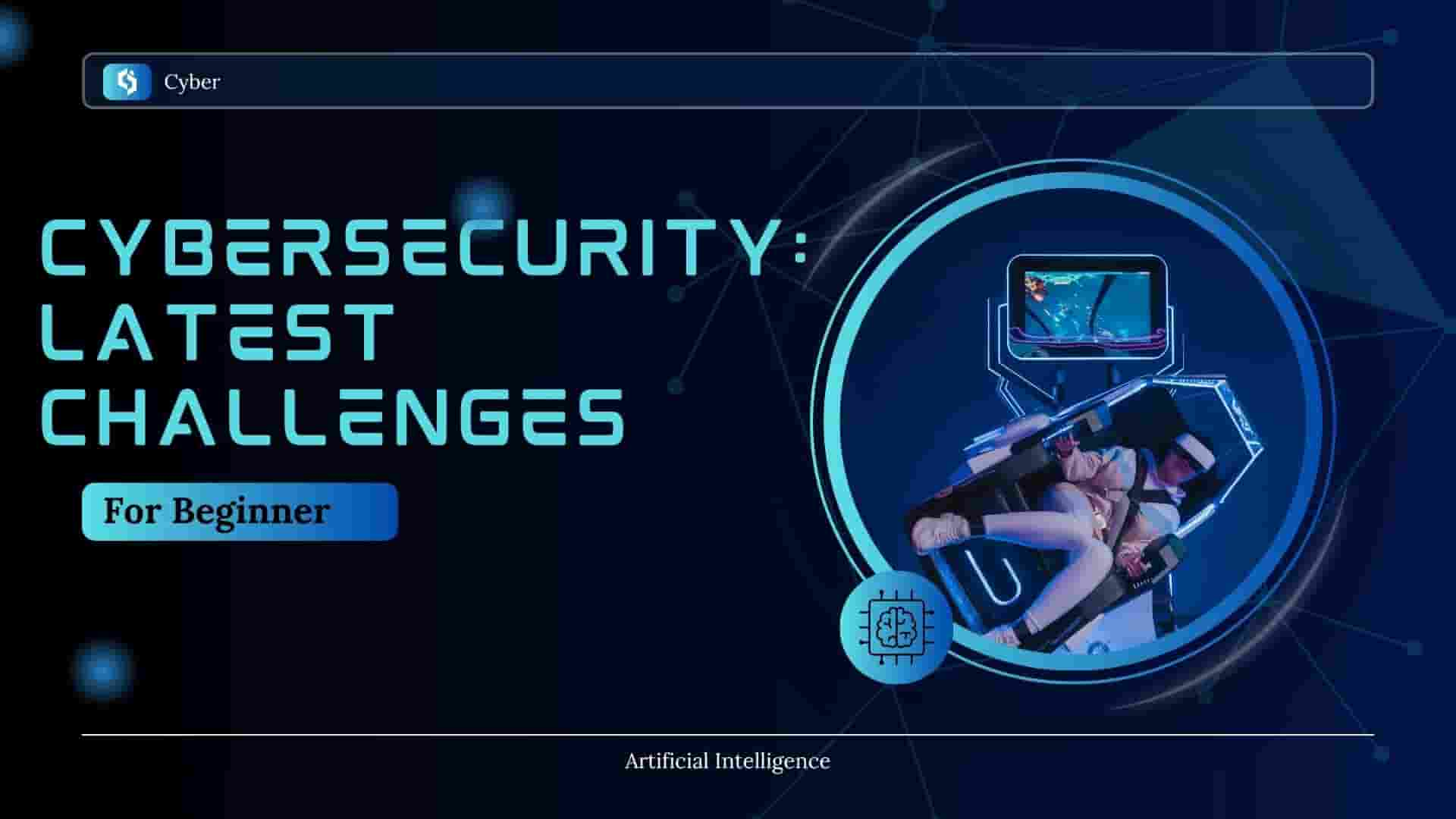Imagine:
Why Cybersecurity Matters in 2025
Cybersecurity isn’t just for tech geeks coding in dimly lit rooms—it’s for everyone. From your grandma’s online bingo to your kid’s Roblox account, we’re all connected 24/7. In 2025, over 80% of the global population uses the internet daily, and every click is a potential open door for cybercriminals. Cybersecurity is like a digital seatbelt—it keeps you safe when things go haywire. Without it, your personal data, bank accounts, and even your identity are up for grabs.
The Cost of Cybercrime
Cybercrime is no small potatoes. According to CNBC, cybercrime cost businesses and individuals $9.5 trillion in 2024, and experts predict it’ll climb to $10.5 trillion by the end of 2025. That’s more than the GDP of most countries! Small businesses lose an average of $25,000 per attack, while individuals face stolen identities or drained savings.
Impact on Everyday Life
Think cyberattacks only hit big corporations? Think again. A hacked email can lead to fake invoices sent to your contacts. A compromised social media account might spam your friends with questionable links. Worse, a data breach could expose your home address or credit card details. Imagine hackers turning your smart thermostat to Arctic levels in July—just for kicks. Cybersecurity protects your digital life from these nightmares.
Why Everyone Needs to Care
From teenagers sharing selfies to seniors managing pensions online, no one is immune. Businesses, governments, and even schools rely on cybersecurity to keep operations running smoothly. A single breach can disrupt supply chains, halt hospital services, or leak sensitive student data. Our guide on why cybersecurity matters dives deeper into its universal importance.

Top Cybersecurity Challenges
Hackers in 2025 are like the villains in a sci-fi movie—relentless, creative, and armed with cutting-edge tech. Let’s break down the biggest cybersecurity threats you need to know about.
AI-Powered Cyberattacks
Artificial intelligence (AI) is a double-edged sword. Hackers use AI to craft phishing emails so convincing they could fool your mom into thinking they’re from her book club. These emails mimic real people, using perfect grammar and personal details scraped from social media. In 2024, AI-driven phishing attacks rose by 30%, and they’re only getting sneakier. AI also powers malware that adapts to avoid detection, making traditional antivirus software sweat.
Ransomware’s Reign of Terror
Ransomware is the digital equivalent of a kidnapper holding your files hostage. Hackers encrypt your data and demand payment—often in cryptocurrency—to unlock it. In 2024, ransomware attacks surged by 40%, targeting hospitals, schools, and even small businesses. The average ransom demand? A cool $1.5 million. Worse, paying doesn’t always get your data back. Just ask the city of Atlanta, which lost millions in a 2018 attack.
IoT Vulnerabilities
Your smart fridge, fitness tracker, or baby monitor is awesome—until it becomes a hacker’s gateway. Internet of Things (IoT) devices often have weak cybersecurity, like flimsy locks on a treasure chest. In 2025, there are over 75 billion IoT devices worldwide, and many lack basic encryption. Hackers can use these to spy, steal data, or launch attacks on bigger networks.
Supply Chain Attacks
Hackers don’t always come at you directly—they sneak through the back door. Supply chain attacks target third-party vendors, like software providers or contractors, to infiltrate larger networks. The 2020 SolarWinds attack compromised 18,000 organizations by exploiting a single vendor’s software update. In 2025, these attacks are more common, with 60% of businesses reporting supply chain vulnerabilities.
Deepfake Deceptions
Deepfakes aren’t just for viral videos. Hackers use AI-generated audio or video to impersonate CEOs, family members, or even you. Imagine getting a call from “your boss” asking for sensitive files—only it’s a deepfake voice. These attacks doubled in 2024 and are a growing cybersecurity concern for businesses and individuals alike.
Cloud Security Risks
Cloud storage is convenient, but it’s not Fort Knox. Misconfigured cloud settings can expose sensitive data to the public internet. In 2024, 70% of data breaches involved cloud misconfigurations, affecting millions of users. With more businesses moving to the cloud, securing these platforms is a top cybersecurity priority.
| Threat | Description | Impact | Examples |
|---|---|---|---|
| AI Attacks | AI-driven phishing and malware | Harder to detect, widespread | AI-crafted phishing emails |
| Ransomware | Data encryption for ransom | Financial loss, data loss | Colonial Pipeline (2021) |
| IoT Hacks | Weak device security | Network breaches, spying | Smart camera hacks |
| Supply Chain | Third-party vulnerabilities | Widespread network damage | SolarWinds (2020) |
| Deepfakes | AI-generated impersonations | Fraud, misinformation | CEO voice scams |
| Cloud Risks | Misconfigured cloud storage | Data exposure | Capital One breach (2019) |
Effective Cybersecurity Solutions
Hackers may be clever, but you can be cleverer. Here’s a comprehensive toolkit to bolster your cybersecurity and keep the bad guys at bay.
Strong Passwords and Multi-Factor Authentication
Forget “password123” or your dog’s name. Strong passwords are long, random, and unique for every account. Think “SunnyH1k3r$2025!” instead. Better yet, enable multi-factor authentication (MFA), which adds a second verification step, like a code texted to your phone. MFA stops 99.9% of account takeover attempts, according to Microsoft. Check our password security guide for more tips.
Regular Software Updates
Those “update available” pop-ups are annoying, but they’re lifesavers. Software updates patch vulnerabilities that hackers exploit. In 2024, 60% of breaches involved unpatched systems. Set your devices and apps to auto-update, and you’ll sleep better knowing your cybersecurity is up to date.
Employee Training and Awareness
Humans are cybersecurity’s weakest link. A single click on a phishing link can bring down an entire company. Regular training teaches employees to spot suspicious emails, avoid shady links, and report issues. For example, a 2023 phishing simulation showed that trained employees were 50% less likely to fall for scams. Our cybersecurity training resources offer practical tools for businesses.
Advanced Threat Detection Tools
Modern cybersecurity relies on tools like intrusion detection systems (IDS) and endpoint protection platforms (EPP). These use AI to monitor networks in real time, spotting threats before they cause damage. For instance, EPPs can detect ransomware behavior and quarantine it instantly. Businesses should invest in these to stay ahead of sophisticated cyber threats.
Virtual Private Networks (VPNs)
Public Wi-Fi is a hacker’s paradise. A VPN encrypts your internet connection, making it nearly impossible for snoopers to steal your data. Whether you’re working from a coffee shop or streaming at home, a VPN is a must for online security. Look for reputable providers with no-logs policies.
Data Backups
Ransomware can’t hurt you if you’ve got backups. Regularly back up your data to an external drive or secure cloud service. Use the 3-2-1 rule: three copies, two different media, one offsite. This ensures you can restore your files without paying a dime to hackers.
Firewalls and Antivirus Software
Firewalls act like bouncers, blocking unauthorized access to your network. Antivirus software scans for malware, viruses, and other nasties. In 2025, opt for next-gen antivirus with AI capabilities to catch evolving threats. Free versions work for basic protection, but paid options offer more robust features.
Secure IoT Devices
Your smart devices need love too. Change default passwords, disable unnecessary features (does your fridge need Wi-Fi?), and keep firmware updated. Consider a separate network for IoT devices to isolate them from your main systems. Our IoT security guide has more details.
- Use a Password Manager: Store complex passwords securely.
- Enable MFA Everywhere: Add an extra layer of protection.
- Update Regularly: Patch vulnerabilities before hackers exploit them.
- Train Staff: Educate employees on phishing and social engineering.
- Monitor Networks: Use IDS/EPP for real-time threat detection.
- Backup Data: Follow the 3-2-1 rule to protect against ransomware.
- Use VPNs: Encrypt your connection on public Wi-Fi.

Cybersecurity for Different Groups
Cybersecurity isn’t one-size-fits-all. Different age groups and professions face unique challenges. Here’s how to tailor your online security approach.
Teenagers and Young Adults
Gen Z lives online—think TikTok, gaming, and group chats. But oversharing on social media can expose personal details to hackers. Teens should avoid posting sensitive info (like home addresses) and use privacy settings. Also, beware of gaming scams promising free skins or currency—they’re often phishing traps.
Parents and Families
Parents juggle online banking, shopping, and kids’ devices. Use parental controls to monitor kids’ activity and teach them not to click random links. Secure home Wi-Fi with a strong password and WPA3 encryption. Our family cybersecurity guide offers kid-friendly tips.
Seniors
Seniors are prime targets for phishing scams disguised as Medicare or bank alerts. Encourage them to verify emails by calling trusted contacts directly. Simple tools like password managers and antivirus software can make cybersecurity easier for less tech-savvy users.
Small Businesses
Small businesses often lack dedicated IT teams, making them easy prey. Invest in employee training, cloud security, and regular backups. A single breach can cost thousands and damage customer trust. Check our small business cybersecurity tips for affordable solutions.
Large Enterprises
Big companies face complex threats like supply chain attacks and insider threats. Implement zero trust architecture, conduct regular security audits, and use advanced threat detection. Enterprises should also comply with regulations like GDPR or CCPA to avoid hefty fines.
Real-World Cybersecurity Case Studies
Let’s look at real examples to see how cybersecurity failures hurt and how solutions save the day.
Colonial Pipeline Ransomware (2021)
In 2021, a ransomware attack shut down the Colonial Pipeline, disrupting fuel supplies across the U.S. Hackers exploited a weak password to access the network. The company paid $4.4 million to regain control, but the incident highlighted the need for strong passwords and employee training. Lesson: Never skimp on basics.
Capital One Data Breach (2019)
A misconfigured cloud server exposed 100 million Capital One customers’ data. The hacker, a former cloud engineer, exploited a firewall flaw. This breach cost the company $150 million in fines and damages. Solution: Regular cloud audits and penetration testing could’ve prevented it.
Microsoft Exchange Server Attack (2021)
Hackers exploited vulnerabilities in Microsoft Exchange servers, affecting 250,000 organizations worldwide. The attack spread malware and stole data. Microsoft released patches, but many organizations were slow to update, worsening the damage. Takeaway: Timely updates are non-negotiable.
Success Story: Target’s Recovery
After a massive 2013 breach exposed 40 million credit card numbers, Target invested $1.4 billion in cybersecurity upgrades, including zero trust architecture and employee training. By 2024, they reported zero major breaches. Proof that proactive cybersecurity works!
Future of Cybersecurity
The cybersecurity landscape is evolving faster than a viral meme. Here’s what’s on the horizon for 2025 and beyond.
Zero Trust Architecture
Zero trust is the “trust no one, verify everyone” approach. It requires continuous authentication for every user and device, reducing breach risks. In 2025, 70% of enterprises are adopting zero trust, according to Gartner. It’s like having a digital bouncer at every door.
Quantum Cryptography
Quantum computing could break traditional encryption, but quantum cryptography offers unhackable solutions based on physics. While still experimental, companies like IBM are testing quantum-safe algorithms. This could revolutionize cybersecurity by 2030.
AI-Driven Defense
If hackers use AI, defenders can too. AI-powered cybersecurity tools analyze massive datasets to predict and prevent attacks in real time. For example, Darktrace’s AI detects anomalies in network traffic, stopping threats before they escalate. Our AI in cybersecurity post explores this further.
Blockchain for Security
Blockchain’s decentralized structure makes it ideal for securing transactions and data. In 2025, industries like finance and healthcare are using blockchain to prevent tampering and ensure data integrity. It’s like a digital vault that hackers can’t crack.
Global Regulations
Governments are cracking down on cybercrime. New laws like the EU’s NIS2 Directive mandate stricter cybersecurity standards for businesses. Non-compliance can lead to fines up to €10 million. Staying updated on regulations is crucial for organizations worldwide.
Read more: How to Use VPNs Safely for Streaming & Privacy 2025
FAQs on Cybersecurity
What is cybersecurity and why is it important?
Cybersecurity protects internet-connected systems—like computers, phones, and IoT devices—from attacks, theft, or damage. It’s crucial because cyber threats like ransomware and phishing can steal data, drain bank accounts, or disrupt lives. Strong cybersecurity keeps your digital world safe.
Why are cyberattacks increasing in 2025?
Cyberattacks are surging due to more connected devices, remote work, and AI-powered hacking tools. Weak IoT security and phishing scams make it easier for hackers to target individuals and businesses, costing trillions annually.
How can I improve my personal cybersecurity?
Use strong, unique passwords, enable MFA, and keep software updated. Avoid suspicious links, use a VPN on public Wi-Fi, and back up data regularly. Antivirus software and awareness of phishing scams boost your online security.
What’s the biggest cybersecurity threat today?
Ransomware leads the pack, locking files and demanding payment. AI-powered phishing, supply chain attacks, and IoT vulnerabilities are also major threats due to their sophistication and ability to cause widespread damage.
Is free antivirus software enough for protection?
Free antivirus provides basic protection against common threats but often lacks real-time detection or multi-device support. Paid antivirus offers advanced features, making it ideal for sensitive data or frequent online activity.

